That Fit Friend is supported by its readers. I [Jake Boly] run this site myself and buy the gear I review. If you purchase through my site, I may earn commissions on sales, read more here!
After the success of my last big brand comparison piece discussing the Metcon 9, Nano X5, and Dropset 3, I thought it was time to make a similar comparison for these brands’ HIIT shoes. Shout out to my man @capt1941 for the suggestion on my YouTube channel.
The Free Metcon 6, Nano Gym, and RapidMove ADV 2 are all models that I’d categorize as being more of the “premium” HIIT-focused shoes from these brands. They all have price points of $120 and they’re built for being generalists that can be used for a bit of everything in the gym with a bias towards classes and versatility.
While having similar performance intents, each of these shoes has its own list of pros and cons. Not to mention, each of these shoes size very differently and has areas where they excel and start to fall short in the gym.
For these shoes, I made a point to take them through similar workouts. For example, I performed similar HIIT workouts to assess responsiveness and lifts in them to see where their midsoles started to compress so I could get a better idea of their stability thresholds.
Quick Performance Summary
For these shoes, I made a bigger point of testing them for HIIT/classes with a small bias toward strength training. Unlike other cross-training shoes built primarily for lifting with some versatility, I positioned these as being the more “generalist” and versatile-focused trainers with a small side of lifting.
- What to Buy for Lifting: Nike Free Metcon 6. If you love taking classes but lifting is still a big part of your training, opt for the FM6. This shoe will be your best bet for stability between these three, and it has the widest toe box.
- What to Buy for HIIT/Classes: Adidas RapidMove ADV 2. The Lightstrike Pro midsole has a super responsive feeling for jumping, and the Torsion system feels good for keeping you planted and fast when tackling multi-directional work. The FM6 is also a good option here.
- What to Buy for Short Runs: Adidas RapidMove ADV 2. It’s the most forgiving for running, and it feels awesome for the short interval runs that you’ll tackle in-class workouts. The FM6 can also be solid, but it’s not as forgiving for heel strikers.
- What to Buy for Daily Wear: Nike Free Metcon 6. This model is the most comfortable and widest. If you’re on your feet all day coaching or working an active job, then I think you’ll be happiest with this model. The RapidMove ADV 2/Nano Gym run a bit too narrow for all day comfort, IMO.
Sorry, Reebok Nano Gym, but you didn’t get any wins here. The Nano Gym just feels a little “half-baked,” in my opinion. It’s wicked narrow, has an awkwardly high heel-to-toe drop, and comparatively, it’s just not as strong. It can work for certain populations, but for the masses on the fence, go FM6 or RapidMove ADV 2.
Performance Deep Dive (For My Overthinkers)
Stability for Lifting
For each of these shoes, I pushed squats, deadlifts, and barbell reverse lunges up to various weights where I started to feel midsole compression. Once I noticed enough compression to compromise performance, I stopped, took my notes, and moved on. There’s a spectrum of stability that exists between these shoes.
The Free Metcon 6 is the best between these three in the lifting category. In this model, you can get away with training up to 315-365 lbs without too much compression. I did notice some compression starting around the 275-315 lb range, but it wasn’t enough to impact performance significantly. What I particularly appreciate about the Free Metcon 6 is how the wider platform allows for better toe splay during heavy lifts, something the other two models fall short of. The wider platform and flexible Free midsole are also nice for single-leg work.
For the RapidMove ADV 2, I worked up to 275 lbs but capped my lifting there. While the Lightstrike Pro midsole is technically denser, I found the higher stack height and narrower heel actually made it feel less stable under heavy weights. During my testing with walking lunges at 185 lbs, for example, I noticed some lateral stability issues that weren’t present in the Free Metcon 6. If you’re a lot more recreational with your lifting, then I wouldn’t stress this, but if you’re big on barbell lifts and heavy single-leg lifts, then you’ll be a bit capped in this model.
The Nano Gym showed the most compression under various loads in my testing. When I was squatting anything over 225 lbs, I could feel noticeable compression, and the narrow toe box limited my ability to grip the ground effectively during heavy lifts. I think what also hinders this shoe’s lifting performance is its excessively high heel-to-toe drop. It pitches you forward when training, and I noticed this a lot in deadlifts and RDLs.
Winner: Nike Free Metcon 6 (why they won)
- Widest base for enhanced stability
- Handles loads up to 365 lbs comfortably
- Starts showing compression around 275-315 lbs
- Most stable platform for general strength work
- Best balance of HIIT performance and lifting capability
Runner-Up Thoughts: The RapidMove ADV 2, despite its denser midsole, takes second place due to its higher stack height and narrower heel. It feels a little tougher to stabilize with this shoe when hitting single-leg lifts and when doing deadlifts.
Responsiveness and HIIT Performance
For my HIIT-focused sessions, I included a lot of box jumps, jump rope, single-leg hops, and side-to-side work. Two days a week, I program athletic-style workouts for testing purposes and to keep my body moving seamlessly through different ranges of motion. It also helps me better assess how a shoe will perform in other class-style workouts that you’ll take at F45, Nike Studios, etc.
The RapidMove ADV 2 has been my favorite in this category. During my explosive training sessions, I noticed better ground feedback compared to the other models, and that’s due to this shoe’s denser midsole. When performing box jumps and broad jumps, the Lightstrike Pro midsole provided solid energy return. The Torsion System is also a nice feature for keeping the forefoot lively and helping with stability when doing single-leg work. For example, when doing skater strides, I felt like this feature helped me stabilize and feel planted despite the heel running a bit narrow.
The Free Metcon 6 performs well for HIIT as well, though I did encounter some durability concerns during heavy sled pushes on turf; more on that below. For good, the flexible forefoot design makes this shoe comfortable and accommodating for explosive movements. I also like how the heel has a wider base to help you stabilize when doing multi-directional work. That said, for most studio-based HIIT workouts, I found it to be nearly as capable as the RapidMove ADV 2. My main gripe with the FM6 is that it did have a durability mishap when sled pushing 5 plates on turf. My forefoot midsole is starting to split. However, outside of that, it’s held up well.
The Nano Gym’s performance in HIIT workouts was mixed in my testing. While the cushioning felt great during jumping movements, I experienced some lateral stability issues during side-to-side movements due to its shape/last. The narrow toe box combined with the looser upper had me experiencing some spillover issues from time to time. Not to mention, and as discussed above, the high drop just ain’t it — at least for me. I don’t like feeling pitched forward when training and doing things like kettlebell swings and snatches.
Winner: Adidas RapidMove ADV 2 (why they won)
- Most responsive feel for plyometrics
- Excellent lateral stability
- Superior ground feedback
- Great for multi-directional movements
- Torsion system provides excellent midfoot support
Running and Daily Comfort
I’ve put each of these shoes through their paces with interval runs ranging from 400m to 1,600m, along with wearing them for full days of coaching and working to assess their overall comfort.
For running performance, the RapidMove ADV 2 has consistently impressed me the most. During my interval testing, particularly on 400m repeats, I noticed better energy return compared to the other models, and that’s due to the Lightstrike Pro midsole. For context, I’ve traditionally liked this midsole material in Adidas running shoes. I also like the heel bevel design and how it made heel-to-toe transitions smoother, especially during faster intervals. I found myself naturally gravitating toward this shoe when I knew my workout would include running intervals combined with bodyweight exercises.
Short Runs Winner: Adidas RapidMove ADV 2
- Lively feel for interval work
- Excellent heel bevel design
- Great forefoot responsiveness
- Ideal for 400-1000m intervals
- Superior energy return
For daily wear comfort, the Free Metcon 6 has been my go-to. During long days of being on my feet all day and training, I’ve noticed less foot fatigue — or I guess annoyance, lol — compared to the other models. The wider toe box allows for natural foot splay throughout the day, and the moderate arch support hasn’t caused as much discomfort even after 8+ hours of wear. They can be a good travel-friendly training shoe, in my opinion. This has been particularly noticeable when compared to the RapidMove ADV 2’s more aggressive arch support, which I found could become uncomfortable during extended wear.
The Nano Gym, while adequately cushioned, has been the least impressive in both categories during my testing. The 8mm drop and narrow fit created what I found to be an awkward ride for running, and the tight toe box became notably uncomfortable during longer days of wear. While some may love how the Nano Gym feels, my foot’s width is just a bit too wide for it, and I like a lower drop for all-day wear.
Daily Comfort Winner: Nike Free Metcon 6 (why they won)
- Most comfortable for all-day wear
- Better forefoot width for natural toe splay
- Less aggressive arch support
- More accommodating fit
- Better walking comfort
Sizing Suggestions
I have E/EE width feet with a normal arch, and I traditionally fit true to size in size 10 US shoes. Every shoe that I buy for my reviews is a size 10, and I do this to build better contrast and context between models. Here’s how I’d suggest sizing these shoes below based on their sizing charts and what you normally wear.
Narrow Feet:
- All models: True to size
Medium Width:
- All models: True to size
Wide Feet (E/EE Width):
- Free Metcon 6: These are the best option between these three, I’d suggest going true to size.
- RapidMove ADV 2: They can work if arch support isn’t an issue for you. 3E+ width feet, I’d pass.
- Nano Gym: I’d not recommend these, even with sizing up.
Flat Feet:
- Free Metcon 6: The most accommodating of these three, but there’s still a little arch.
- RapidMove ADV 2: The arch can feel pretty aggressive. You’ll probably want to pass.
- Nano Gym: The arch is aggressive. I’d pass on them.
Construction Specs to Know
The construction differences between these models significantly impact their performance in various training contexts. Here’s my breakdown:
| Free Metcon 6 | RapidMove ADV 2 | Nano Gym | |
|---|---|---|---|
| Drop | ~3-5mm (estimated) | ~6mm (estimated) | 8mm |
| Midsole | Nike Free Tech | Light Strike Pro | Floatride Energy |
| Width | Wide | Medium/Wide | Narrow |
| Outsole | Full rubber coverage | Continental rubber | Partial rubber |
| Arch Support | Moderate | Aggressive | Moderate-High |
Midsole Differences
When thinking about these shoes and their midsoles, think about them as existing on a spectrum of density. The RapidMove ADV 2 has the densest midsole, the FM6 has a medium-density feel, and the Nano Gym runs the softest.


In the RapidMove ADV 2, you have Adidas’ signature Lightstrike Pro midsole. This material is often used in their running shoes. Comparatively, when you press your fingers into the midsoles of these shoes, they feel the densest and most firm. You also have the TPU Torsion System that runs through the forefoot and attaches to the midsole.
The Free Metcon 6 utilizes Nike’s Free midsole tech. This midsole has a lot of flexibility and play to it. Most who buy the Free Metcon models buy solely for the Free midsole because it tends to move well with the feet and feel the most comfortable. These have a medium-density feel when pressing into them.
The Nano Gym utilizes Reebok’s Floatride Energy Foam, but it has a soft density compared to when this material is used in models like the Nano X4. This shoe also has breaks in the forefoot and midfoot for flexibility, similar to the Free Metcon 6.
Outsole Differences
None of these shoes feature full rubber outsoles, which is becoming an industry norm for these higher stack height, HIIT-focused shoes. Companies typically do this to save on weight and keep the shoes flexible despite being thicker with their midsoles.


The RapidMove ADV 2 utilizes a Continental rubber tread, which I personally love. The AdiZero Boston running shoes utilize this material and it tends to do a really good job with durability and grip. The red material is the Torsion System and the midfoot is a TPU but I didn’t find that it compromised grip in this model.
The Free Metcon 6 features a nearly full rubber tread with breaks at the forefoot for the Free midsole. This material grips super well, but almost too well, and that’s why I think I had breakdown at the forefoot. The rubber bit so well on the turf that the weight and friction for my sled push pulled the midsole apart.

The Nano Gym features a rubber tread over the heel, forefoot, and midfoot. This shoe utilizes the least amount of foam and that’s why I also don’t love this shoe for all-day wear when navigating inclement weather. Excessive exposed midsole foam can have faster breakdown
Upper Differences
The uppers vary pretty greatly between these shoes. The RapidMove ADV 2 has the most upper volume, but the loosest heel. The Nano Gym’s upper volume is standard, and they have a fairly high boot. The FM6 has a middle-of-the-road upper volume to them and bootie-style boot which can feel limiting for thicker feet.


That RapidMove ADV 2 features a mesh upper with textile and synthetic overlays. The toe box has reinforced layers and the Torsion System extends up the sides of the shoes. The boot is built with a blend of knit and mesh materials. There are six core eyelets that go up this shoe.
The Free Metcon 6 is built with a knit and mesh as well with a synthetic toe box layer. The boot has reinforced layers and it doesn’t have a ton of stretch to it. There are five core eyelers that extend up the shoe that utilize Nike’s Flywire technology.

The Nano Gym is built primarily with a lightweight mesh, and it has textile overlays through the midfoot. The boot extends up fairly high and it has a lip. I haven’t had issues with rub or security in this shoe despite this. There are five core eyelets and a padded mesh tongue.
Who Should Buy Each Shoe Summary
Buy the Nike Free Metcon 6 if:
- You want the most versatile option
- You have wider feet
- You need a balance of lifting and HIIT performance
- You value all-day comfort
Buy the Adidas RapidMove ADV 2 if:
- You prioritize plyometric performance
- You want maximum ground feedback
- You do primarily HIIT classes
- You don’t mind some arch support
Buy the Reebok Nano Gym if:
- You have narrow feet
- You prefer a softer, more cushioned ride
- You don’t need maximum stability for heavy lifting
- You’re okay with a higher heel-to-toe drop
Final Verdict
While each shoe has its strengths and weaknesses, the Nike Free Metcon 6 emerges as the most well-rounded option for most users, offering the best blend of stability, comfort, and versatility.
The Adidas RapidMove ADV 2 excels specifically for HIIT-focused training, and the Nano Gym… despite its comfortable cushioning, is limited by its narrow fit and higher drop.
If you have additional questions about these shoes, drop a comment below or reach out via Instagram!


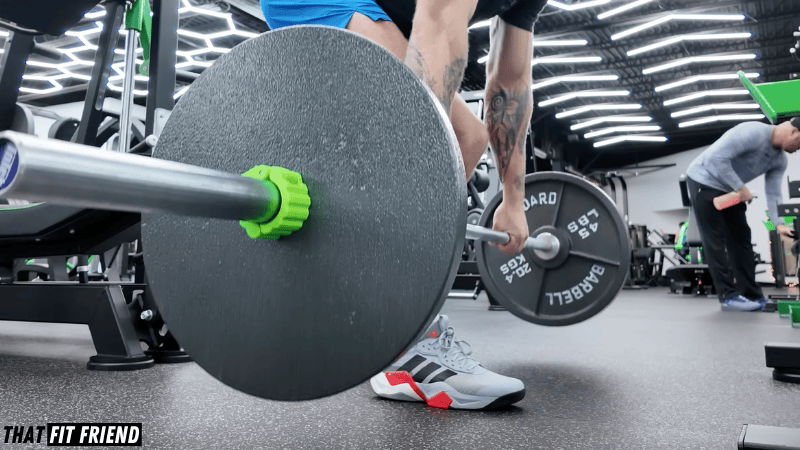

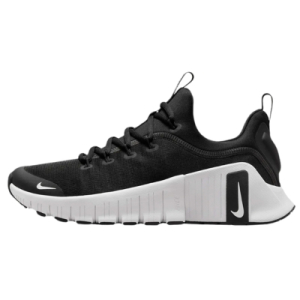
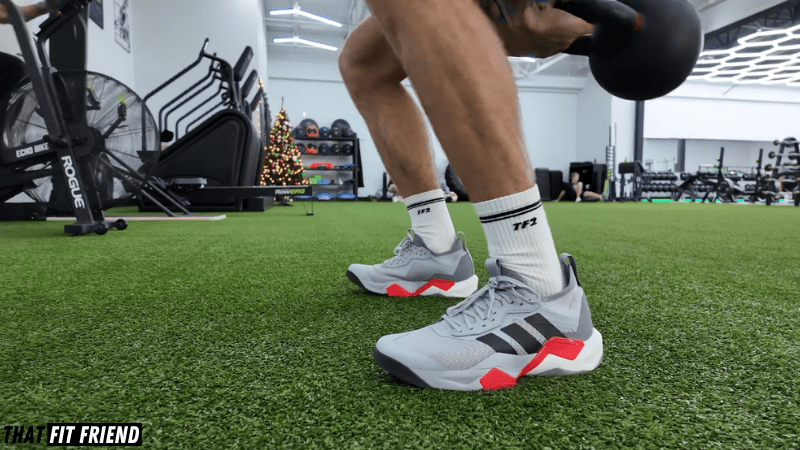

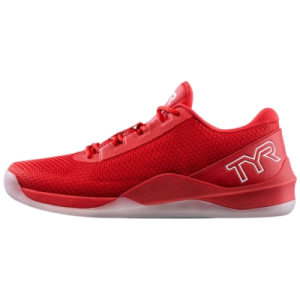
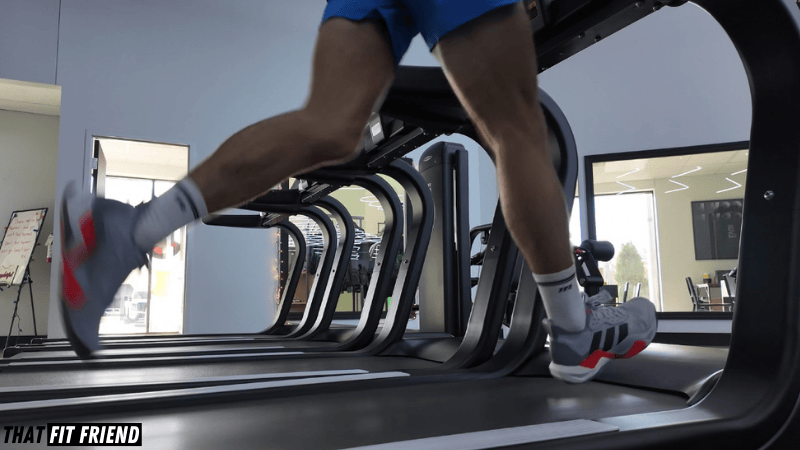
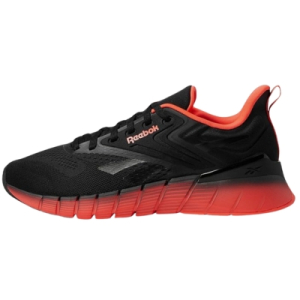


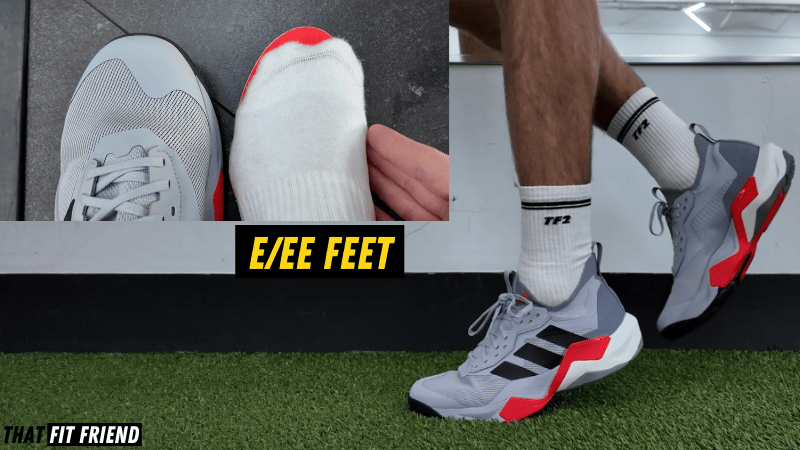






Rajeev
Hi Jake,
Love your reviews and find them super helpful! I’ve been searching for new workout shoes for over a year now and am finally ready to buy, but I’m overwhelmed by the options. I primarily do HIIT and total body strength training, with lots of jumping. My current Nike Flex Contacts are painful during jumping and offer zero lateral stability and offer no stability while doing weights. I’m considering the Adidas Rapidmove Adv 2, Reebok Nano X5, and Nike Free Metcon 6. Since I can’t try them on, I’m relying on reviews. Any insights you can offer on which would be best for my needs would be fantastic! Thanks so much!
Ohhh, I’d go with the Nano X5! They’ll give you a nice platform for your asks and should offer enough stability for you without feeling too dense and overbearing.
Please let me know how they work! Free Metcon 6 would be my second pick here. The ADV 2’s stability will lack if that’s something you’re wanting a lot more of, imo.